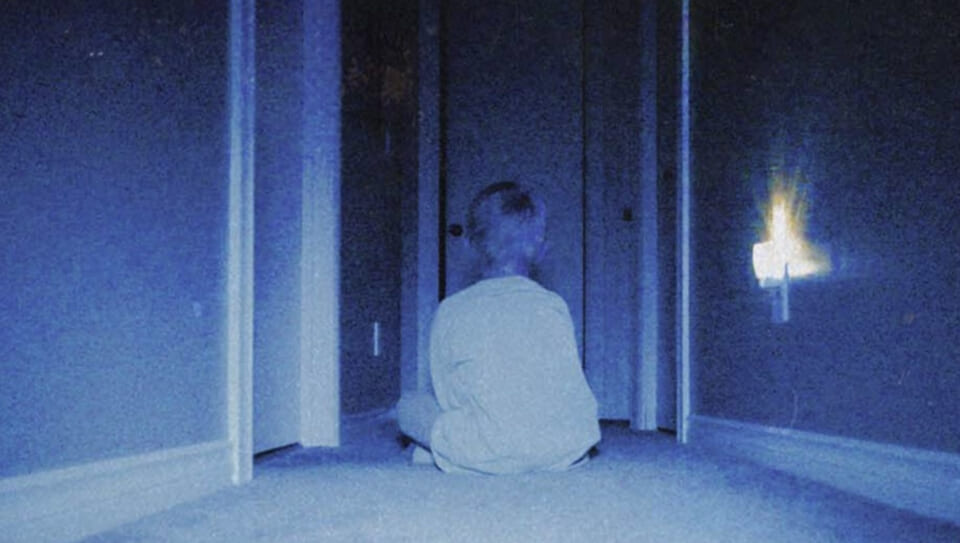‘Skinamarink’ Leaves You Unattended In The House You Grew Up In [Review]

Do you ever feel like a part of you still exists in your childhood home? For better or worse, through good memories and bad? As if a small part of your soul is fractured, sitting in a purgatory of salmon colored-walls, sharp Lego bricks, and outdated bedding? Skinamarink from Munity Pictures transports its audience back to a simpler time, and traps us there, locking us in the place where we grew up before throwing away the key. It’s a deeply unsettling exploration of death, childhood, and the house you grew up in.
There is very little narrative to anchor the experience of this impressionistic horror project from filmmaker Kyle Edward Ball. To properly appreciate your viewing you’ll need to radically accept the arthouse experimentalism of the journey. You too will eventually become trapped with the children of Skinamarink, in a house without windows and doors. And you’ll eventually join the void, unable to leave the ghostly walls of your childhood bedroom. An inescapable purgatory of memory, senses, and the tip-toeing of little feet.

Many of us who seek the help of a counsellor have been asked to transport ourselves back to a similar space represented here. To find our child selves and to offer them the comfort and support they were never granted when they needed it the most. Skinamarink does the opposite. The horror of this film is the power it has to transport you back to your most vulnerable place and then leave you there. Unattended, abandoned, and lost.
The visuals crafted by Ball are purposefully sparse, consisting almost entirely of interior b-roll. Haunting glimpses of old televisions cast their glow across anachronistic toys and footboards. Doorframes flicker in and out of existence and faceless figures roam its halls with heavy sadness. The horror here is never exploited with obviousness. There are no antique doll heads, no haunted xylophones. Only the lingering tragedy and dread of vulnerable souls lost in familiar hallways, searching for an adult to help them. It’s relatable, to say the least.
A singular horror reference which kept coming to mind while witnessing Skinamarink is the unfinished Silent Hill game P.T. A uniquely haunting demo of a video game that fans will remember being a tragic unfinished collaboration between Hideo Kojima and Guillermo del Toro. P.T also trapped its audience in familiar walls, forever haunting the same hallways and bedrooms stained with death, trauma, and grief. While the scares in Ball’s film don’t reflect anything familiar to P.T., they do share a certain stressful nostalgia. A liminal passage between life and death, using your childhood home as its particularly cruel prison.
For those seeking a traditional horror movie experience, turn back now. And I say so without judgment. Personally, I prefer a filmmaker to do the majority of the heavy lifting. I enjoy taking a backseat and to experience art as the bottom; a passive participant happily willing to go along for the ride. But not here. Filmmaker Kyle Edward Ball demands the audience pick up the shovel and do the digging on their own. It’s not fair, but it is an exciting and original vision of what horror can look like.
EDITOR’S NOTE: This review out of the 2022 Fantasia Film Festival was initially published on July 28th, 2022.
Skinamarink hits theaters this Friday, January 13th.
-
Skinamarink
Summary
The horrors of ‘Skinamarink’ are in its ability to transport you back to your childhood home and then leave you there. Unattended, abandoned and lost.

